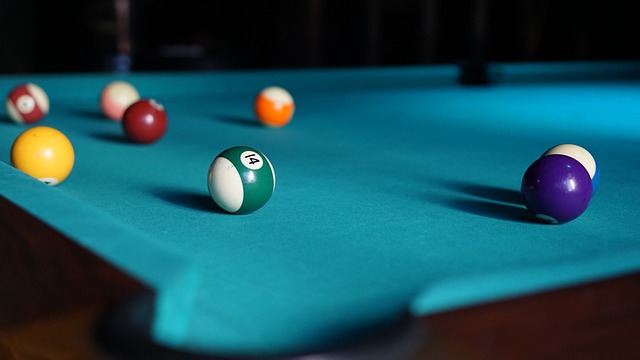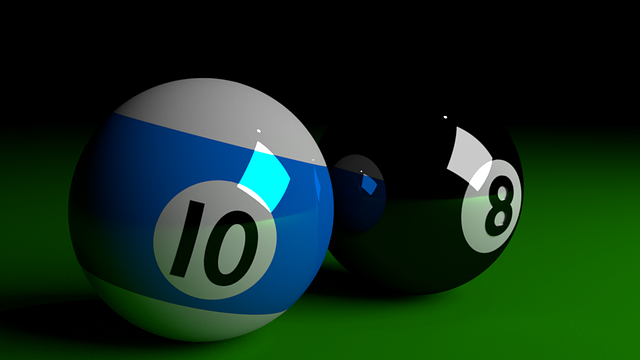The weight of a pool table, influenced by its construction, determines whether it's a 1-piece (650–900 pounds) or 3-piece design (400–600 pounds). Slate construction offers superior stability but adds weight, while divided designs are lighter for easier setup. "How heavy is a pool table?" varies based on materials, size, and assembly, with premium slate and complex designs leading to higher weights.
“Curious about the weight difference between 1-piece and 3-piece slate pool tables? This comprehensive guide delves into the intricacies of pool table construction, focusing on the role of slate and its significant impact on overall weight. We’ll compare these two popular designs, exploring the nuances that set them apart in terms of mass and stability. Additionally, we’ll uncover factors influencing the final weight, offering insights for buyers seeking to understand ‘how heavy is a pool table?’ before making their next purchase.”
- Understanding Pool Table Construction: The Role of Slate and Its Weight
- Comparing 1-Piece vs 3-Piece Slate Tables: A Detailed Look at Their Weight Differences
- Factors Influencing the Overall Weight of a Slate Pool Table
Understanding Pool Table Construction: The Role of Slate and Its Weight

Pool tables come in various constructions, but understanding the role of slate and its weight is key to grasping the differences between types like 1-piece versus 3-piece designs. Slate, a dense natural material, serves as the playing surface for pool tables, contributing significantly to their overall weight and stability. The weight of a pool table directly impacts its durability, playability, and the level of craftsmanship involved in its construction.
A 1-piece slate pool table features a single, solid sheet of slate that runs the entire length and width of the table, offering seamless performance and a consistent playing surface. This design results in a heavier table due to the concentrated mass of the slate, enhancing stability during play but also making assembly and transport more challenging. On the other hand, a 3-piece slate pool table consists of three separate sections: head, foot, and middle rails with a split slate top. This construction reduces weight compared to a 1-piece design, allowing for easier handling and installation but potentially compromising stability to some extent. Knowing these differences helps consumers choose based on their needs—weight considerations, playability preferences, or budget constraints.
Comparing 1-Piece vs 3-Piece Slate Tables: A Detailed Look at Their Weight Differences

When comparing 1-piece and 3-piece slate pool tables, one of the primary considerations is their weight difference. A 1-piece slate table, as the name suggests, has a single, solid slab of slate for its playing surface. This design results in a heavier table, typically weighing between 650 to 900 pounds (294 to 408 kg). The compact nature of the 1-piece construction makes it a sturdy and durable option, ideal for both commercial and high-end residential settings where weight capacity is a concern.
In contrast, a 3-piece slate table features three separate sections: head, middle, and foot. This design not only allows for easier assembly and transport but also results in a lighter table, usually weighing between 400 to 600 pounds (181 to 272 kg). While offering enhanced maneuverability, the three-piece structure may compromise slightly on stability compared to its one-piece counterpart. However, the weight difference makes 3-piece slate tables more suitable for home use or settings where frequent relocation is anticipated, balancing convenience with performance.
Factors Influencing the Overall Weight of a Slate Pool Table

The weight of a pool table, whether it’s a 1-piece or 3-piece design, varies significantly due to several factors. One of the primary considerations is the construction materials used, with slate being the most common and premium choice. Slate tables are renowned for their durability and excellent playing surface, but they also tend to be heavier than alternatives like vinyl or wood. The thickness and quality of the slate itself play a crucial role; thicker, higher-grade slate will naturally add more weight.
Additionally, the size of the table influences its overall heft. Larger tables require more material to maintain structural integrity and create a stable playing surface, leading to increased weight. Assembly method is another factor; 3-piece tables often have separate legs and slates, adding complexity to the construction process and potentially contributing to a higher weight. Finally, additional features like leg levelers or specific coating treatments can also impact the table’s weight, making it heavier due to extra components or processing steps.
In conclusion, understanding the weight difference between 1-piece and 3-piece slate pool tables is essential for consumers looking to make an informed decision. While a 1-piece slate table tends to be heavier due to its monolithic construction, 3-piece models offer better maneuverability and accessibility. The overall weight of a slate pool table also depends on factors like material quality, size, and design. Knowing these variations can help you choose the ideal table that suits both your gameplay needs and available space. So, whether you prefer a sturdy, heavy-duty 1-piece or a more lightweight 3-piece, there’s an option to enhance your pool playing experience.
